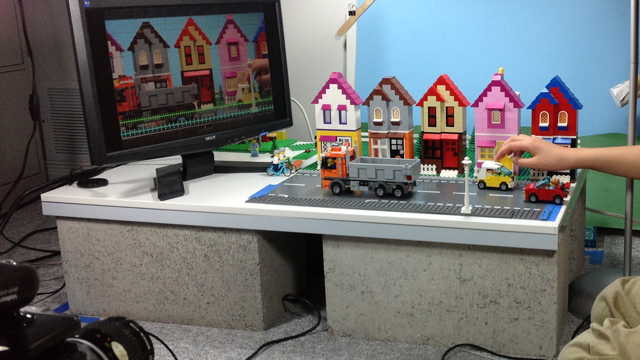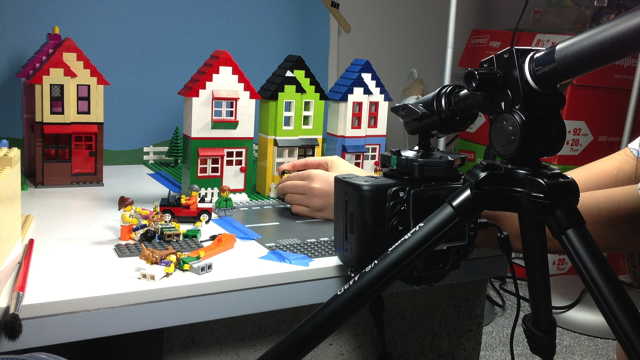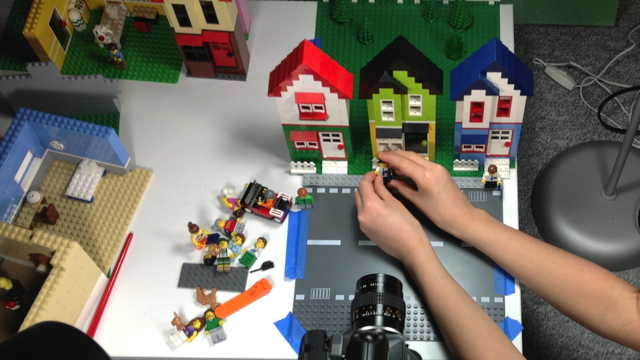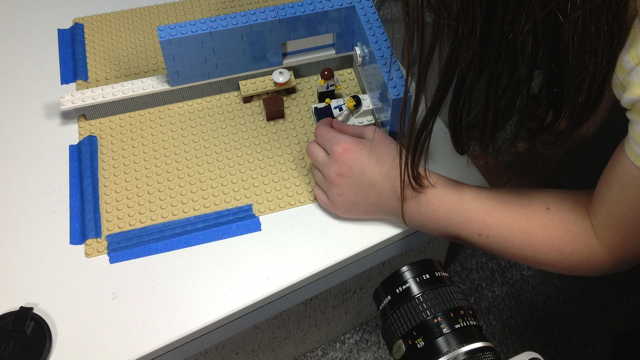Missionaries
Principal photography for this movie was completed in a couple of days in February 2013. The post-credits scene was filmed in October 2013.
Little girls "dreamed" up the idea which was scaled back so the movie could be made in less than a week.

After the Seafood Restaurant movie, we built a new animation table. It is low to the floor because it is the only way we could reduce table shake. The top is an IKEA counter cut down to hold six LEGO 32x32 baseplates. The camera is inverted and would eventually require a real clay brick--not a LEGO brick--to weigh it down.
The camera and software combination provide a live/video preview of the next picture to be taken and mechanisms to compare it with any previous picture that was taken. Classic stop motion movies were done without any preview or instantaneous review capabilities. With our software we can plan out movements by drawing on the screen.

There are several great things about making stop motion movies with LEGO:
- The scale is small so you don't require a room-sized set for your characters
- The sets are comparatively easy to build
- You can buy most scale-sided props e.g. brooms, swords, hairpieces, etc.
- It is all inexpensive when compared to stop-motion done with puppets that have bendable armatures inside

The downside of making stop motion movies with LEGO include:
- The scale is small so you need to use a macro lens for close-ups which also magnifies hair, dust, lint, etc. and has a very shallow depth-of-field
- The sets are small so it is easy to bump things with your hands requiring you to start a scene over again
- The minifigures have a limited range of movement and cannot be easily made to talk without significant post production effort
- LEGO parts are made in a limited range of colours
- You can never own enough white parts

Unlike regular LEGO models which represent an entire machine, building, animal or whatever, we only build what will be seen by the camera and so we can get our hands inside. Sometimes we build our models with walls that can be easily removed so we can take pictures from different angles.
In order to keep our sets from moving, we tape them to the heavy table top. Generally we just tape the sides of the LEGO baseplate to the table. If the baseplate is a bit warped, we use double-sided tape under the baseplate to hold it flat to the table.
|